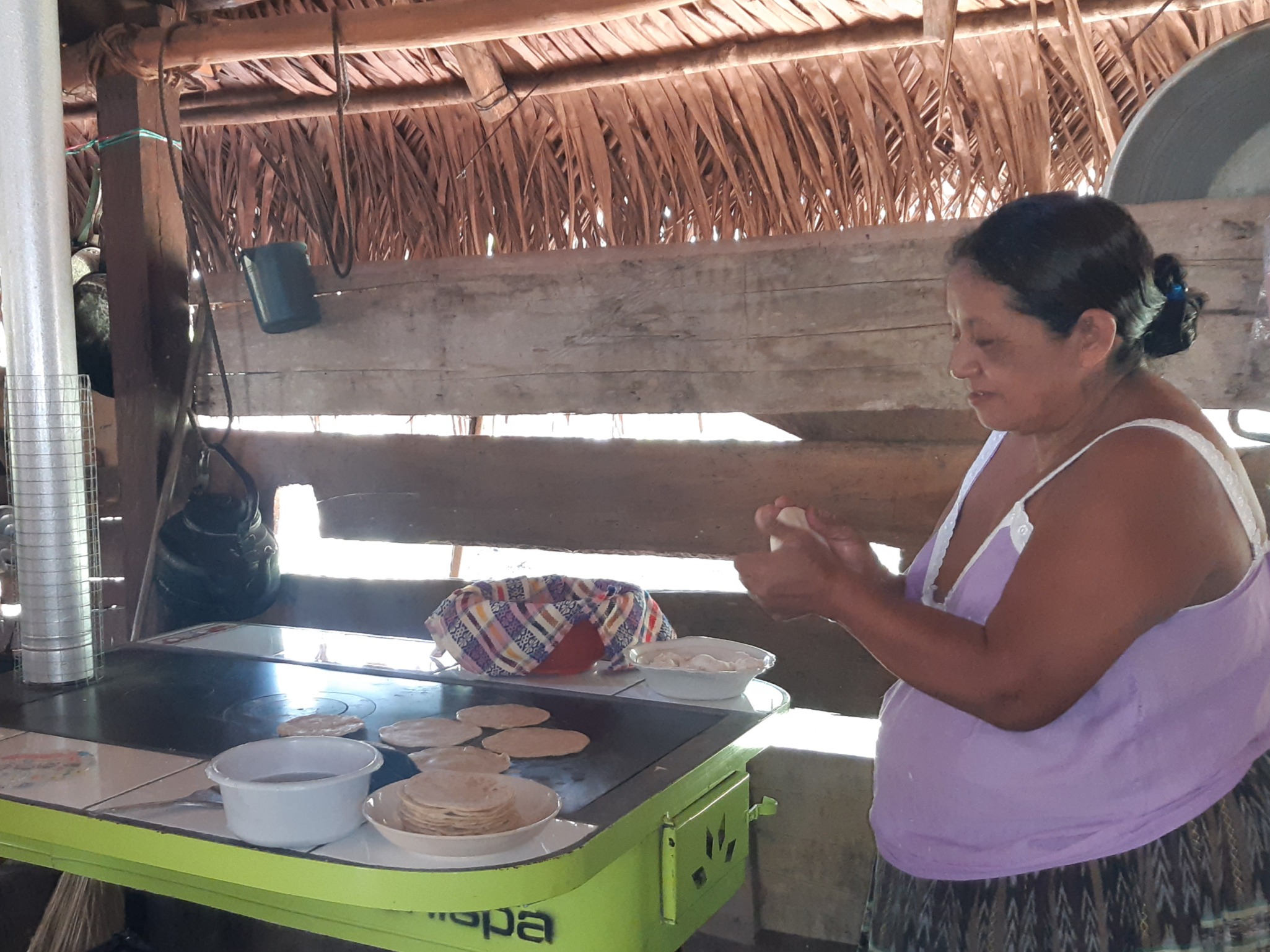
GUATEMALA
I feel very happy to experience my fuel-efficient stove. Part of my commitment is that my granddaughter learns how to make tortillas and use the stove. The traditional open fire produces very high heat and smoke. And now it is a grace to have this technology that will change our lives.
- Doña María, Community member, Nuevo Nacimiento Caliz, Sarstun

What We Do
With the project activities we seek:
Community-led Forest Restoration: Restore tropical forests in the SMUZ with native trees.
Sustainable Agriculture and Capacity Building: Improve local capacity to maintain sustainable agriculture initiatives on land that is currently degraded, incorporating best practices and new techniques from learning exchanges.
Healthy Homes: Reduce anthropogenic pressure on forests resulting from fuel-wood extraction within the SMUZ and establish home gardens.
Environmental Education: Broaden the communities' understanding and active participation in forest conservation.
Map

Ethnic Groups:
Population Size:
Languages:
Economic Activites:
Poverty Rate:
Project Area:
Ecosystem:
Endangered Species:
4,900
Maya-K'ekchi', Mestizo
Maya K'ekchi, Spanish
Subsistence farming, fishing
67%
35,202 hectares
Central American Atlantic Moist Forest; Mesoamerican Gulf-Caribbean Mangroves
Manatees, jaguars, tapirs, and howler monkeys. 30 species of bats reported, placing it as the second most diverse site in Latin America
Key Facts
Stats

Video
Partner

The Mayan Association for Wellbeing in the Sarstún Region (APROSARSTÚN) was founded by Mayan students in 2007 to improve local livelihoods and preserve the environment in the 16 predominantly Maya K’ekchi’ communities within the Sarstun Multiple Use Zone. As a grassroots community development partner, APROSARSTÚN identifies, organizes, and supports the communities who participate in our collaborative project. EcoLogic provides financial support, strategic planning, technical training, and capacity building.
Communities Restoring the Nature of Sarstun
The project takes place in the Sarstun Multiple Use Zone which was declared in 2005. The communities that live there were established at the end of the 20th Century as a result of the Guatemalan Civil War that lasted more than 36 years. Many of the communities in the SMUZ received refugees that were displaced by the violence and several new communities were created by this refugee population. It is a highly biodiverse region, with flora that includes 130 species distributed in 52 families that include both tropical forest and mangroves. The Multiple Use Zone has lost 5,866 hectares of forest cover from 2001-2017. Some of the main threats to the forests within the SMUZ are: (a) land use change for agricultural production; (b) fuel-wood extraction; and (c) illegal logging. There are 4 mangrove species in the area, 2 of which are on the red list of endangered species of CONAP. The area also boasts an incredible diversity of fauna.


.png)